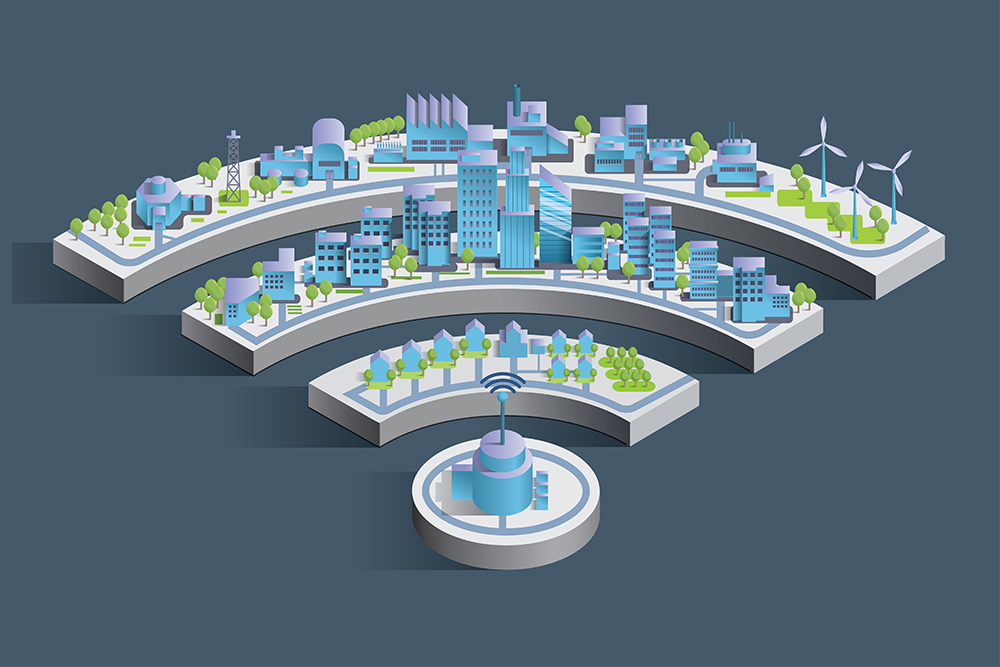Smart City Business Model: Revenue potential of existing assets
In his entry to this blog series, Dr Adarsh Varma discussed smart planning for a sustainable city and stated that it should be a prerequisite. I could not agree more but for reasons highlighted in our Manifesto for Smart City Planning, common mistakes are often made and many initiatives fail to progress beyond a pilot scheme.
A lot of emphasis is placed on specific technologies and the revenue potential they bring, such as digital advertising, whilst the revenue generation potential of existing assets is often overlooked. Here, we take a look at some easy wins for any masterplan to find tangible, long-term sources of revenue from existing assets that provide financial and operational benefits to all major stakeholders.
By taking control of their infrastructure, master developers will gain a long-term source of revenue, simultaneously building the foundations upon which any other urban system can be deployed.

The Landscape
Within our Manifesto, we identified the business case as one of four key elements in the roadmap towards technology-driven initiatives. Like any other business decision, when requesting investment for technology, the full financial lifecycle of the product must be calculated, with any cost savings or revenue generation possibilities articulated, and evidence provided of successful implementation prior to acceptance.
This procedure is essential and it poses challenges with regards to pioneering technologies for two reasons. The first reason is that, being pioneering, successful case studies are limited and evidence of revenue generation are often anecdotal. The second reason is, being pioneering, the smarter technologies are either not yet developed or in their early infancy when the cost plan for the development is being created and therefore not included. As such, many smart technologies being introduced to schemes require additional funding and the business cases are scrutinised even more closely as the project inevitably moves into a cost-saving mode.
This landscape reminds me very much of the Smart Building landscape of ten years ago. The market was not clearly defined, people working closely with the technology could see the efficiencies and benefits but projects would often struggle to secure funding. One element that everybody could agree on, however, was that migrating towards a converged infrastructure – a single network deployed within a building from which any other device can connect – was logical and this provided the underlying platform from which any other technology was deployed.
The result is that currently virtually every single new building, whether residential, commercial, retail or hospitality venue has its own dedicated network for services such as Video Surveillance, Wi-Fi and Building Management Systems. Holistically, the duplication of head-end equipment required to run each building, and the space and expenditure to maintain these systems is huge, so let’s look for efficiencies within the plots, how master developers can generate OpEx from existing infrastructure and how plot developers can save significant CapEx on new developments.
The current landscape reminds me of the smart building landscape of 10 years ago…every new building has its own, siloed, digital networks. Let’s look for equipment and network efficiencies!

The Technology
Very much like buildings, large campuses and cities now require their own dedicated network infrastructure to support essential systems like CCTV and Wi-Fi, as well as revenue generating systems such as digital advertising. These networks are sometimes installed in silos, duplicating infrastructure and maintenance contracts but larger developments are now opting for a converged approach.
Each city is different and retro-fitting technology into existing developments poses its own set of unique challenges, but every single new-build development can and should take advantage of the shared protocols that form the rich internet of things tapestry currently evolving around us.
The primary efficiency any development can take advantage of is the converged network infrastructure itself. This infrastructure consists of network switching equipment, servers, valuable real-estate with server rooms requiring UPS power, cooling, fire suppression systems and a host of other technologies. This infrastructure has traditionally been considered a depreciating asset, but with some careful planning, it can be utilised as a revenue generation platform and set targets like any profitable business department.
The Revenue
By deploying a fully resilient, high-speed network to meet the development’s requirements, the developer can monetise this asset by offering devices as a managed service, on a long-term lease, thus creating a revenue source from the underlying existing asset. These devices could be CCTV cameras, Wi-Fi access points, telephones or even proven smart building technologies themselves such as hot-desk management platforms and Unified Communications systems. Once the decision has been made to monetise the asset, the potential is as large as the development itself with devices all managed and charged via a centralised operating platform.
This solution does not work for everybody. Corporate headquarters or financial services providers have their own private networks and security considerations. There is, however, an increasing trend of corporate tenants looking to lease fully managed office space in targeted locations. As more and more services are heading towards a cloud-based infrastructure, tenants no longer require large server rooms within their satellite offices, instead opting to connect to the corporate servers via VPN.
While master developers offering managed services is not yet commonplace, the business model is mature and comes with relatively low risk. This hybrid-cloud model provides benefits for all major stakeholders:
- Master developers find revenue streams that did not previously exist which will significantly contribute towards the long-term maintenance of essential systems
- Landlords’ own systems such as video surveillance and Wi-Fi are delivered with cost and space saving efficiencies and they also gain the ability to offer fully managed office space
- Tenants receive large CapEx savings by not having to build their own server rooms, then populate them with expensive head-end equipment and also save the physical space of the server rooms themselves
The primary reason Video Surveillance as a Service (CCTV cameras leased on a per-device basis) is not commonplace in the UK is the bandwidth dependency on local internet connections. A ‘smart’ development has already overcome this problem by installing a high-speed network to cater for its own technological needs. This solution simply takes that high-speed network and extends it in to any plot looking to reduce their own CapEx.
Once the developers’ mind is set that digital infrastructure has the potential to generate revenue projects are far more likely to succeed
Although there is an increase in capital expenditure for the master developer, which could potentially be offset by partnering with a managed services provider, the cost savings for the development as a whole is too great to be ignored. Once the developers’ mind is set that digital infrastructure has the potential to generate revenue and sets the technical and governance building blocks in place to do it, deploying further digital services becomes a far smoother process and projects are far more likely to succeed. As our Manifesto implies, all it needs is longer-term planning, broader-based thinking and the organisational mind-set to seize the benefits on offer.









